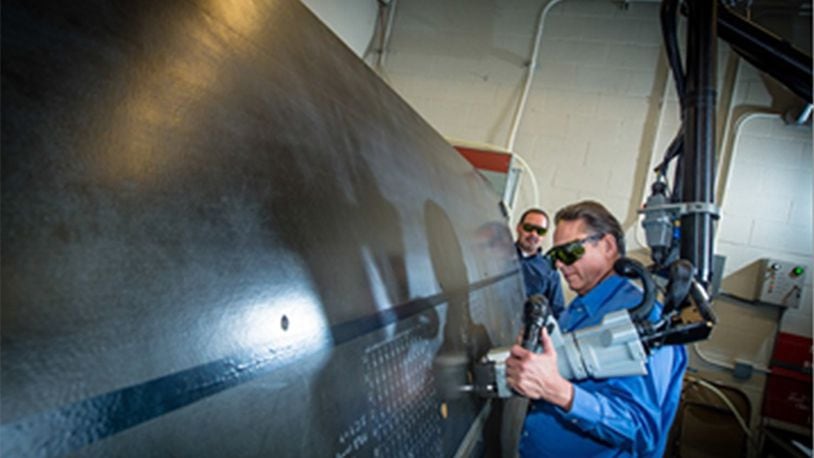Composite structures, when joined using adhesive bonding rather than traditional rivets or fasteners, require a new inspection process to verify the strength and safety of the composite bonds.
LBI is a stress test to ensure that adhesively fastened structures are joined correctly using a bond’s response to a high-energy pulsed laser generated stress wave to detect structurally substandard bonds.
A weak, improperly prepared bond will be broken by the pulse, but a standard bond will remain unchanged after pulse excitation. Substandard adhesive bonds can result from errors created by poor adhesive mixing, improper surface preparation or contamination.
LBI is the only reliable and mature method capable of assessing the integrity of adhesive bonds in composite structures and detecting kissing bonds, a bond line defect where two surfaces are in intimate contact but are not properly bonded.
“This effort is a significant progression of more than a decade of collaboration and development work by the U.S. Air Force, The Boeing Company, LSP Technologies and additional major aerospace original equipment manufacturers,” said Andrea Helbach, Structures team lead in Air Force Research Laboratory’s Materials and Manufacturing Directorate.
“However, it is far from finished. On-going efforts will prove the technology on multiple representative aircraft structures and prototype a fiber optic delivery system to increase device reach.”
Future work in this technology area includes analyzing data for bond integrity in the field. Tests also need to be done to define a wider gamut of materials, thicknesses, and joint designs so the technology can be expanded to other platforms. Additionally, hardware improvements must be made to the laser bond inspection unit for usability in a manufacturing environment.
This technology, along with a Defense Advanced Research Projects Agency program to establish bond process control, are significant steps in enabling bonded aircraft structures use in the field.
About the Author
